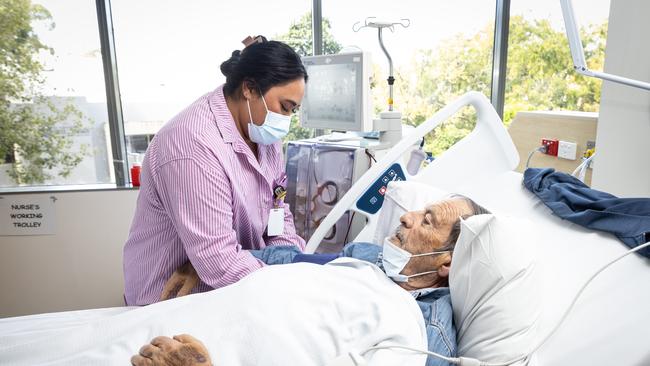Call for independent body to set insurance premium rises
Catholic hospitals are calling for a fundamental overhaul of the way private health insurance premium rises are calculated and approved.

Catholic hospitals are calling for a fundamental overhaul of the way private health insurance premium rises are calculated and approved, with the costs pressures faced by hospitals taken into account in yearly increases that should be decided through an independent process.
A Catholic Healthcare Australia submission to the premium round - an annual process in which insurers apply to increase the cost of their private health policies - has called for any premiums price bumps to be specifically linked to the amount of benefits paid out by health funds.
The CHA is calling for premium price rises to be determined at arms-length from the political process, with an independent body such as the Indpendent Health and Aged Care Pricing Authority determining how premium rises should be calculated and approved. Currently premium increases are approved by the Federal health minister.
“An independent body would take into account the evidence and data across the sector to
deliver better outcomes for patients, hospitals, and funders,” said CHA’s Director of Health Policy Katharine Bassett.
“While delivering a more robust premium round in the short-term, this would also lay the
groundwork for a careful and considered longer-term move towards a National Efficient Private Price — an independently set, nationally consistent activity-based funding model for private hospitals,” Dr Bassett said.
The CHA submission comes in the midst of a Federal government rapid viability review of private hospitals, with the sector only marginally viable and many facilities at risk of closure. Mental health wards, psychiatry inpatient services and rehabilitation services are under particular pressure within the private system. Many wards have empty beds and some have been forced to close. A recent analysis performed by corporate accounting and auditing firm EY found that the $22bn private hospital system was under severe pressure, with 70 per cent of private hospital groups currently loss-making and the industry as a whole is operating at a profit margin of just 1 per cent.
CHA has told the Federal government in its submission that the rules and regulations currently governing private health services have not sufficiently protected patients from services closures. “The current system has neither prevented private health insurers from banking huge profits nor ensured an adequate flow of funding to struggling private hospitals,” the submission says. It calls for actual benefits paid out the previous year, premium revenue, management expenses broken down in detail, overall annual profits, out of pocket costs associated with insurance product tiers, and products closed and reopened at a higher cost, to all be revealed transparently and taken into account in the premium setting process.
Private Healthcare Australia CEO Rachel David said many of these aspects were already reported to the prudential regulator APRA and analysed “with a fine tooth comb” during the premium round process. Dr David said a further layer of regulation was not optimal.
“Adding a further layer of regulation into the mix I’m not sure adds anything in terms of transparency in the sector, but it certainly adds cost and confusion,” Dr David said.
Dr David said private insurers were subject to a high degree of transparency, but private hospitals were not. She said, however, that PHA agreed the premium setting process should be depoliticised.
Dr Bassett said the current process was opaque and did not sufficiently consider the sector as whole. “I think the key point is that at the moment, it’s not an evidence based process,” Dr Bassett said. “So it’s very much looking at one side of the costs, which is insurers putting their predicted costs going forward. And it’s not taking into account the cost of delivering health care.
“At the end of the day, you continue squeezing the hospitals tighter and tighter, and the funding is getting smaller, when the cost of delivering care is increasing, we’re ultimately going to see more private hospital services closing because the sector is no longer remaining viable. And that ultimately undermines private health insurance.”




To join the conversation, please log in. Don't have an account? Register
Join the conversation, you are commenting as Logout